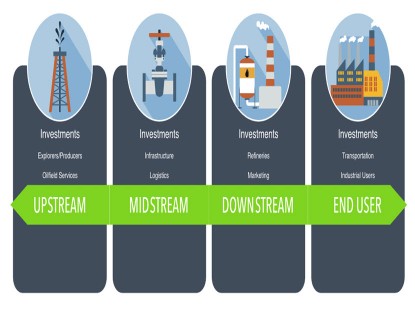Portfolio Manager Call Recap: The State of U.S. Energy
On a recent conference call, Portfolio Managers Ryan Kelley of the Hennessy Gas Utility Fund and Ben Cook of the Hennessy BP Energy Fund and Hennessy BP Midstream Fund shared their insights on the impact of the current economy on supply and demand dynamics and commodity prices for the oil and natural gas industries.
-
 Ryan C. Kelley, CFAChief Investment Officer and Portfolio Manager
Ryan C. Kelley, CFAChief Investment Officer and Portfolio Manager -
 Ben Cook, CFAPortfolio Manager
Ben Cook, CFAPortfolio Manager
Top Takeways
Supply, Demand, and Prices
- Quickly following the destruction in crude oil demand and collapse of the OPEC alliance, production has been curtailed, and as economies begin to reopen, we’re seeing the oversupply imbalance diminish somewhat, supporting an oil price move to the mid to high $30s range.
- We anticipate the price of crude oil will remain in the high $30s for the remainder of 2020 and should be in the $40s in 2021. In this range, many U.S. energy companies will restore curtailed production and some will revive growth efforts.
- In contrast to the collapse in demand for crude oil, U.S. natural gas demand in 2020 is estimated to decline by only 3-4%, and the long-term fundamental growth trajectory for natural gas remains largely unchanged.
- The low oil price environment could be supportive of natural gas prices; as oil production decreases, the natural gas produced as a byproduct also declines, which reduces overall natural gas production volumes.
- An improving natural gas pricing environment should benefit operators in the U.S. dry gas producing shale basins, such as Cabot Oil and Gas, and pipeline companies including Williams and Kinder Morgan, and LNG company Cheniere.
Earnings, Valuations, and Payouts
- Over the past few years, the growth in earnings per share (EPS) of Utilities has been about 1.5× their long-term average. Since the highs earlier this year, 2020 EPS estimates for Utilities have been reduced by just 2%, compared to a drop of close to 30% for the S&P 500 Index.
- Over the past decade Utilities have traded at a 5-10% premium to the overall market on a P/E basis, but they are currently trading at a 7% discount to the S&P 500 Index (using 2021 estimates), providing an attractive entry point for investors.
- Midstream valuations are compelling, currently trading at a more than 20% discount to their 5-year average on an enterprise value to forward EBITDA basis.
- The Gas Utility Fund’s companies have grown their dividends 4.8% per year for the past three years. Nearly all have released their dividend policies for the coming year and are projecting an average growth rate approaching 6% in 2020.
- While 2020 aggregate cash payouts for midstream companies will likely be lower than in 2019, midstream companies are expected to grow distributions starting in 2021 over the next several years.
- Only two companies in the Hennessy BP Midstream portfolio have reduced payouts, and we believe the remainder are well positioned to weather the current environment.
Investment Considerations
- The combination of historically low valuations, improving fundamentals, and the prospect for rising cash payouts make now an opportune time to consider an investment in midstream energy companies, particularly given the recovery that appears to be unfolding.
- With approximately 80% of the portfolio in natural gas and diversified utilities and 20% in pipelines and LNG exportation companies, the Hennessy Gas Utility Fund provides a more conservative way to gain exposure to energy.
- In this article:
- Energy
- Gas Utility Fund
- Midstream Fund
You might also like
-
 Investment Idea
Investment IdeaDefining the Energy "Value Chain"
 Ben Cook, CFAPortfolio ManagerRead the Investment Idea
Ben Cook, CFAPortfolio ManagerRead the Investment IdeaEnergy is a large and complex sector. The sector’s broad sub-industries can be divided into a “value chain,” each segment of which has different characteristics and offers different investment opportunities.
-
 Portfolio Perspective
Portfolio Perspective
Energy Transition FundEnergy - Attractively Valued Sector with Higher Free Cash Flow Yields
 L. Joshua Wein, CAIAPortfolio Manager
L. Joshua Wein, CAIAPortfolio Manager Ben Cook, CFAPortfolio ManagerRead the Commentary
Ben Cook, CFAPortfolio ManagerRead the CommentaryIn the following commentary, Portfolio Manager Ben Cook and Josh Wein discuss the Fund’s disciplined process throughout the volatility driven by tariff uncertainty and geopolitical developments.
-
 Portfolio Perspective
Portfolio Perspective
Gas Utility FundNatural Gas: Essential to Reliable Power
 Ryan C. Kelley, CFAChief Investment Officer and Portfolio Manager
Ryan C. Kelley, CFAChief Investment Officer and Portfolio Manager L. Joshua Wein, CAIAPortfolio ManagerRead the Commentary
L. Joshua Wein, CAIAPortfolio ManagerRead the CommentaryUtilities have delivered strong returns in 2025, fueled by demand trends, earnings growth and their defensive nature, positioning natural gas utilities as a compelling opportunity amid market uncertainty.
